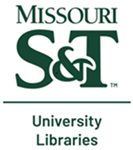Masters Theses
Abstract
"To determine the effects of processing variables on weld quality in the gas-metal arc welding process, four experiments were conducted that resulted in the development of a model that can be used to predict the final weld properties. The first experiment was used to establish the variables in the process while criteria were established to assess the weld quality. These tests led to the development of a test jig, which allowed the introduction of a gap. The second experiment looked at five independent variables, which included the background current, wire feed speed, tractor speed, torch angle, and the torch progression angle. The measured responses included the upper leg length, lower leg length, percent penetration into the base material, and the cross-sectional area of the weld pool. The results were plotted in various ways to aid in finding ranges for the fixed settings in experiment three.
The third experiment consisted of a two-level, sixteenth factorial design. The variables included the peak current, background current, wire feed speed, tractor speed, torch angle, torch progression angle, and gap between the two steel specimens. The responses included the amount of spatter, porosity, distortion, upper leg length, lower leg length, penetration, and cross-sectional area of the weld pool. These results allowed some variables to be eliminated in the final experiment, which consisted of a full factorial design.
The fourth experiment studied the effects of varying the peak current, wire feed speed, tractor speed, and gap. The responses included the amount of spatter, porosity, force per inch of weld, percent penetration into the base material, and average microhardness of the weld pool. The results of this experiment were used to complete equations for each response within the experimental ranges tested. The amount of contribution each variable correlated well with, experiment three. The results were then compared with the theoretical predictions which were obtained from the 3-D model developed by the Mechanical Engineering department"--Abstract, pp. 1-2
Advisor(s)
Askeland, Donald R.
Committee Member(s)
Tsai, Hai-Lung
Department(s)
Materials Science and Engineering
Degree Name
M.S. in Metallurgical Engineering
Publisher
University of Missouri--Rolla
Publication Date
Fall 1999
Pagination
viii, 91 pages
Rights
© 1999 Jeffrey Michael Rick, All rights reserved.
Document Type
Thesis - Restricted Access
File Type
text
Language
English
Thesis Number
T 7693
Print OCLC #
43628522
Recommended Citation
Rick, Jeffrey Michael, "Effects of processing variables on weld bead morphology using surface tension transfer" (1999). Masters Theses. 1888.
https://scholarsmine.mst.edu/masters_theses/1888
Share My Thesis If you are the author of this work and would like to grant permission to make it openly accessible to all, please click the button above.


